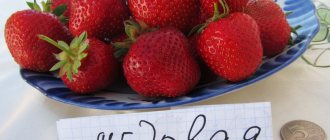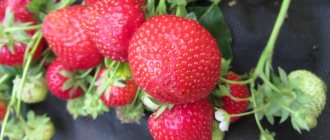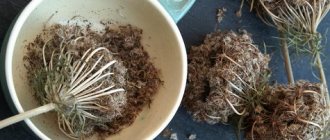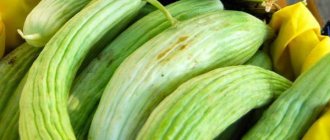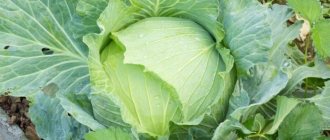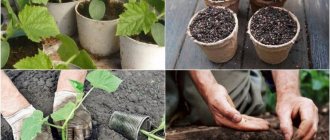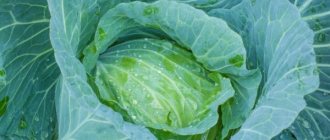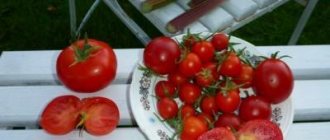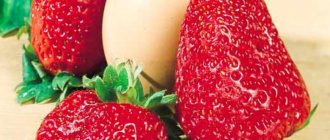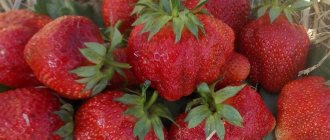Strawberries are the most popular berry in Russia; they are loved by gardeners, entrepreneurs and simply consumers. The fruits of the plant have a unique aroma and taste, and the variety of varieties allows it to be grown in many climatic zones. Strawberries Mara De Bois have good reviews from gardeners and hobbyists and require special attention and care. Russian climate changes are not an obstacle to the growth of this species.
Description of the variety
The bush is neat, low, up to 20 cm, erect, has many leaves. They are light green in color, clean, and medium in size. The leaf petiole is bare.
Peduncles are located below the bush. There are a lot of them. Therefore, the Mara de Bois strawberry has an above-average yield. The weight of one berry is average, from 18 to 26 g. Now varieties with larger berries have been created. This strawberry (Mara de Bois variety) was also used for their selection. The description of the berries says that they are conical in shape. The color is light red, typical of strawberries. The berries are shiny. How does Mara de Bois strawberry differ from other varieties? Reviews from gardeners say that it is extremely tasty and aromatic. These qualities do not deteriorate even as a result of heavy rains. And in sunny weather it is even more fragrant. It tastes sweet and sour. The size of the variety resembles strawberries, and the taste and aroma of strawberries.
Strawberries Mara de Bois (photos presented in the article) begin to ripen at the end of May or early summer (depending on the region). Flowering and ripening of berries continue until the onset of frost. And in closed ground, Mara de Bois strawberries can grow and bear fruit even in winter. Description of the variety, reviews say that in spring and autumn the berries are larger, and in mid-summer they are smaller. This is usually a period of extreme heat.
General characteristics of the variety
Strawberry Mara de Bois has low and compact bushes up to 20 cm high. The leaves are light green, there are few of them. Quite a lot of flower stalks develop on one bush. With proper care, you can get good strawberry harvests from May to October. The fruits are not quite regular in shape and not very large in size (weighing on average 10–20 g).
Did you know? There are more than 300 types of strawberries that are grown on the planet. In Belgium there is a special museum entirely dedicated to this plant.
.
A distinctive feature of this variety is its quite interesting taste, a very elegant combination of sweet homemade strawberries with the taste and aroma of wild strawberries. Weather conditions (humidity, temperature, amount of sunlight), as a rule, do not affect the taste of the fruit, which is also an important factor when choosing a given variety for planting on the site.
You can grow Mara de Bois strawberries both in open ground and in greenhouses. Prone to vertical cultivation, it has not very large fruits and their interesting arrangement; it produces several harvests per year. These qualities attracted the attention of designers to this plant, so the Mara de Bois strawberry is also used as a hanging plant in landscape design.
The variety was developed thanks to the work of French breeders. In 1991, the patent for it was registered under a general license from J. Marionnet. The selection involved wild strawberries and strawberry varieties Sizhoze, Sirafine, Charlotte and others.
In France, as well as throughout Europe, in the USA it is a fairly well-known variety. It has not been cultivated on a large scale due to its average yield, but is a popular product among those who appreciate its excellent qualities and the ability to consume it for a long time during the year.
Creation of a variety
The creation of the Mara de Bois variety is the result of long and painstaking work by French breeders. It smells like strawberries because wild berry varieties were used to create it. And she got her size and density from strawberries.
Mara de Bois in France is considered one of the best and is a standard quality strawberry variety. The berries are consumed fresh.
Can be grown in a greenhouse or greenhouse. The bush is very beautiful, so it is used to decorate the yard and garden.
The Mara de Bois variety is not new. On its basis, scientists have already managed to create many subsidiaries. For example, the Manila variety is based on the Mara de Bois variety. It retains the aroma of its ancestor, but has larger berries.
Varietal characteristics of the hybrid strawberry and strawberry Mara de Bois
This is a day neutral strawberry variety.
Fruits in waves, but steadily. The berries ripen on the current year's rosettes. The fruits are medium-sized, red in color and cone-shaped; there are minor voids inside the dense pulp. The weight of one berry is 15-20 grams.
In rainy weather, the taste of Mara de Bois does not deteriorate; on hot days, the berries become smaller due to lack of moisture.
Strawberry bushes grow well both horizontally and vertically; they can even be grown on a balcony. This variety is resistant to cold. In the northern regions it is susceptible to freezing. In one area, Mara de Bois develops for 3 years; in the 4th year it should be grown in a new place.
Bush size and leaf blade appearance
The bush of this variety is low and compact, the average height is 18-20 centimeters, in some cases it grows up to 25. The leaves have a rich green color. The curly edges of the sheet are slightly raised upward. The petioles are bare, at the base of the stem there are whorls, which subsequently branch and form horns. The flower stalks are short and numerous, with 5-7 inflorescences developing on each.
Flowering and pollination of a remontant variety
Mara de Bois begins to bloom later than other strawberry varieties - this prevents the risk of freezing from unexpected spring frosts. In remontant varieties, the formation of flower buds does not depend on the length of daylight and occurs regardless of the time of day. Flowering continues until the onset of the first cold weather.
Fruiting period and yield
In the southern regions, Mara de Bois begins to bear fruit in the first half of May. In places with a more temperate climate, the first fruits appear in early June. When the berries ripen, they lie on the ground. To avoid rotting of strawberries, the bushes should be picked regularly. The average yield from one bush is 600-800 grams.
Productivity occurs in waves, the highest being in late spring and early autumn. On hot days there is a slight decline. In greenhouses with proper lighting and maintaining a temperature of 16-18 C, Mara de Bois can bear fruit all year round.
See also
Description and characteristics of strawberries of the Kupchikha variety, cultivation and care
Read
Taste qualities of the fruit and its further sale
The strawberries taste sweet, but have a piquant sourness, like wild strawberries. The pulp of the fruit is juicy and aromatic. These strawberries are recommended to be consumed fresh. It is used in the preparation of desserts, jams, milk and fruit cocktails.
Strawberries are sold in small (up to 500 grams) breathable containers. It is not recommended to transport over long distances; the berries quickly deteriorate. Shelf life at room temperature is up to 3 days. For longer preservation, strawberries should be kept in the refrigerator.
Resistance to low temperatures and drought
The Mara de Bois strawberry is resistant to light frosts and does well in regions where winters are mild. In northern latitudes, where the temperature drops below -5 C, the beds need to be covered with the onset of cold weather to avoid freezing. This berry is light-loving, but scorching sun rays are contraindicated for it. If the thermometer shows above +30 C, the bushes should be in partial shade - this will retain the necessary moisture.
Immunity and susceptibility to disease and parasites
Powdery mildew is a fungal disease that completely affects strawberries and quickly destroys them. The Mara de Bois variety has strong immunity to this disease. However, this feature does not protect the culture from other dangers. Strawberry bushes can be spoiled by:
- parasites - ticks, slugs, ants, aphids and other insects;
- gray rot, in which the stem and fruits become covered with fluff and rot;
- brown spot - in this case, the surface of the leaf becomes covered with brown spots, after which the foliage withers and the bushes stop bearing fruit.
If the strawberry is affected by fusarium disease, in which the bush completely withers in a short time, then the plant should be dug up and burned. To eliminate the possibility of infection of the beds, strawberries need to be properly cared for.
Reproduction
Typically, remontant strawberry varieties produce few rosettes for propagation. On the one hand, this is good because they do not need to be deleted. But this is bad for reproduction. After all, getting new bushes will be more difficult.
But the Mara de Bois variety does not suffer from a lack of tendrils for propagation. In order to have more new rosettes, some flower stalks are pinched. This will reduce the berry yield, but will increase the amount of planting material. But why will it decrease? After all, strawberry rosettes bear fruit from the first year of life!
Strawberry planting technology
Strawberries, by definition, are a demanding plant that needs not only comfortable climatic conditions, but also proper care throughout the entire life cycle of the bush.
It is not surprising that to successfully grow strawberries you need to control the planting conditions. To grow this wild strawberry/garden strawberry hybrid, follow these instructions.
Tips for choosing seedlings
- The presence of bent leaves with a yellowish or distorted structure indicates that the plant is sick. It was probably attacked by a strawberry mite. Dots on the surface indicate the presence of a fungal disease that cannot be treated on young plants. In general, try to avoid purchasing limp shoots.
- Seedlings that are fertile in the future must have at least three developed green leaves. This rule also applies to other varieties of strawberries.
- Strawberry roots should be 7 centimeters long and have a dense, branched structure. In this case, the plant will be able to successfully absorb minerals and a sufficient amount of water. The horn also plays a certain role. In good seedlings it grows up to 7 millimeters.
When and where to plant?
Planting strawberries in open ground is organized from mid-April to the end of May. In the northern parts of the country, it is better to plant in mid-June, when the soil has reached a temperature suitable for the successful growth of strawberries.
It is important that the place receives enough sunlight or is illuminated by a reliable artificial system (but given that it is better to grow the berry not on an industrial scale, you should not spend money on equipment).
The Mara de Bois variety responds positively to acidified soil. Therefore, fertilizer from compost and also purchased inorganic fertilizer are regularly applied to a depth of 30 centimeters (1 bucket of compost and 40 grams of fertilizer per 1 square meter).
For the first time, you need to dig up the area and thoroughly compact the soil, disinfecting it. This will allow you to destroy potential pests at the larval stage.
After about a month, when the soil in the strawberry bed has finally settled, you can start planting your seedlings.
The distance between all plants should exceed 35 centimeters. This will allow the already weakened and few antennae of the Mara de Bois to develop and stretch in different directions.
Accordingly, you will be able to get new bushes for growing both this season and next. After planting the plant, water it, mulch the ground, or better yet, cover everything with a thin film. Remember that strawberries cannot be grown in one bed for more than 4 years.
Day neutral strawberries
Remontant strawberry, or day-neutral strawberry, received this name due to the fact that its flower buds form at any length of daylight. Unlike ordinary varieties, in which this occurs only within a certain range.
Remontant strawberries bloom later than early varieties, so they are not so afraid of spring return frosts.
Remontant strawberries and wild strawberries are very demanding on growing conditions. After all, they bear fruit all season, devoting all their energy to the formation and ripening of berries. Therefore, the bushes need to be constantly fed with potassium and nitrogen fertilizers.
Despite these growing problems, remontant varieties are becoming increasingly popular. After all, by the end of the spring season, strawberries get a little boring, and you want to try something new as soon as possible. But closer to autumn, everyone will happily eat its sweet, aromatic fruits.
The berries of modern varieties of remontant strawberries grow up to 50 g or more. But the Mara de Bois strawberries are less productive.
Subtleties of cultivation
Although remontant strawberries are very different in characteristics from ordinary varieties, their care is practically the same. Except for some aspects related to pruning. Otherwise, caring for the Mara de Bois variety is quite easy and simple.
When and where to plant
Before planting seedlings in open ground, you need to choose the most favorable location. Garden strawberries are demanding when it comes to growing conditions, and the Mara de Bois variety is no exception. First of all, the beds should be made in open sunny areas. Bushes should be in the sun most of the day for good yield. In the southern regions, where the sun is scorching, seedlings should be planted in partial shade. For example, under the canopy of trees.
See also
When and how to properly mulch strawberries, the betterRead
It is best to make beds on a hill. Strawberries do not grow well in waterlogged soil and near groundwater.
The most favorable period for planting garden strawberry seedlings is autumn or spring.
In autumn, bushes are planted in August-September. In spring - at the end of April. If flower stalks appear on plants during late autumn planting, they need to be cut off so that the bushes can grow a root system. You need to cut off the first flower stalks, even if they appear in the spring.
Selection of planting material
Only healthy seedlings with no signs of damage are suitable for planting. The leaves should be a rich green hue, without spots or holes. The root system is well developed, the roots are elastic and not dried out.
When purchasing strawberry seedlings, gardeners should pay attention to the number of leaves. There must be at least three of them. The root collar of healthy seedlings is powerful, about 0.5 cm in diameter.
Strawberry planting technology
Planting remontant Mara de Bois strawberries is no different in technology from planting conventional varieties. The soil for the beds begins to be prepared several weeks before the intended planting. The soil is dug up, all weeds are removed and rotted manure is added. Then they make beds and dig holes about 40 cm deep.
Planting process:
- Seedlings are planted 3 weeks after adding manure to the soil.
- The distance between holes is left up to 50 cm, the distance between rows is 60 cm.
- Place the seedling in the hole and straighten the roots.
- Fill the hole with soil and lightly compact it.
- Pour generously with warm water.
After planting, the beds are covered with agrofibre or warm cloth at night. This will protect strawberries from sudden frosts, which often occur in the spring after warm weather sets in.
Fruiting
Remontant varieties are very productive. They bloom and bear fruit in waves, of which strawberries may not even have two, but three or four.
Even during the first spring fruiting, the yield of berries is the same as that of non-remontant varieties, about half a kilogram. The same goes for the Mara de Bois strawberry. The description of the variety indicates that the berries are arranged in a circle in several layers, like a fountain.
Preparing the site
Strawberries should not be grown in one place for more than 4 years. Afterwards the area needs a change of culture. This will make it possible to get rid of pests and diseases that accumulate in the soil during the growth of strawberries.
In order not to be left completely without berries in four years, you need to constantly change the crop on a quarter of the plot. There are various growing technologies. For example, sockets are transferred to the aisle between the rows. But still, strawberries will not grow in one area for a long time.
Soil preparation
Fertilizers are added to the soil approximately three weeks in advance. Usually this is humus or compost at the rate of 1 bucket per square meter and 50 g of complex mineral fertilizers.
On sandy soils, it is necessary to spray once a year with boric acid (a weak aqueous solution), and on calcareous soils - with the same solution of manganese and Cytovit (containing zinc). Then the plants will be able to receive the entire complex of useful substances.
Fertilizers are embedded in the soil to a depth of 25 cm. Before planting seedlings, the rows are dug up using a bayonet.
Landing
Young plants are planted in the spring, in April-May, depending on the climate zone. In more northern areas, planting can be done in early June. You need to focus on the temperature at this time and the possibility of watering. Indeed, often young bushes planted late disappear from lack of moisture before they have time to take root.
Mara de Bois loves sunny places. It is there that it can receive enough heat and light so that its fruits acquire the characteristic taste and aroma of wild berries.
The distance between bushes in a row is 30 cm, and between rows - at least 40 cm. Before planting, you need to take a good look at the plants and remove broken and damaged roots. Then the cut site is treated with ash.
Planted so that the growing point does not fall underground.
Planted plants are watered and covered with a thick layer of mulch. This can be straw, mown grass, sawdust in a layer of at least 7 cm. Black film is often used. But on clay soils, its use can lead to severe compaction of the soil.
Mulch will protect plants from the scorching rays of the sun and retain moisture in the soil. In such conditions, it is easier for young rosettes to take root. And weeds break through the mulch much less often.
Berry care
To increase productivity, garden strawberries need to be constantly looked after. Minimal maintenance includes watering, fertilizing and removing weeds from the site.
Rules for watering and tillage
During the growing season, strawberries need abundant watering. For irrigation, only warm water is used. It is worth watering the beds in the evening to prevent burns on the leaves. Fertilizers are applied to the soil 3-4 times per season. In the first half of spring, organic fertilizers and nitrogen are added to the soil. Nitrogen-containing fertilizers promote active growth.
After inflorescences and ovaries begin to appear on the bushes, phosphorus and potassium are added to the substrate. Such fertilizers not only increase yields, but also improve the taste of berries. Among organic fertilizers, dolomite flour, wood ash, compost, rotted manure and bird droppings are added to the soil. Before the onset of cold weather, the soil in the strawberry beds is mixed with manure.
Mulching
Mulching the soil in strawberry beds will solve several problems with growing garden strawberries. First of all, the soil will always be sufficiently moist. A layer of mulch also prevents weeds from appearing. Peat, sawdust, and straw are used as mulch. The layer must be at least 15 cm.
Trimming leaves and tendrils
There is still debate among gardeners about whether strawberries should be pruned in autumn or spring. Many people prefer to completely cut off the leafy part in the fall, arguing that all the nutrients go into the rhizome. But this method has a significant drawback - in the spring, instead of accumulating nutrients for fruiting, the bushes increase their leaf mass. Because of this, the timing of fruiting is shifted.
In spring, it is especially not recommended to cut off foliage. It is best to remove dry and damaged leaves in the fall and leave everything else. The whiskers can be cut off during fruiting. During flowering they should not be touched.
Preparing for winter
Before the onset of cold weather, all dry and damaged leaves, as well as mustaches, are cut off from strawberry bushes. Then the beds are covered with spruce branches or dense agrofibre.
Growing
The Mara de Bois strawberry is not easy to grow. Reviews from many gardeners indicate that they cannot get good results.
To grow successfully, strawberries need warmth, sun (rain won't hurt) and constant fertilization. If you do not have the opportunity to provide regular feeding, it is better not to plant such varieties, but to grow early, middle and late ones.
In the Non-Black Earth region and to the north, Mara de Bois strawberries are grown under film, otherwise the berries will not have time to ripen and the harvest will be minimal.
In a greenhouse or in warm regions, Mara de Bois strawberries can be grown on a trellis. After all, the rosettes formed this year bear fruit with good care.
Care
It consists of weeding, watering, feeding plants and spraying against pests and diseases.
Mulch will help control weeds by preventing annual plants from getting out. And it is not afraid of perennial weeds. Therefore, it is better to periodically cut weeds such as thistle with a Fokin flat cutter. Don't be afraid that they will start to branch. If you do this deep enough and often enough, they disappear.
You can use selective herbicides, but in this case all the chemicals will be on your table. Therefore, if there is severe weeding, it is better to treat the area at least a year before planting strawberries.
Possible diseases and pests
Common strawberry diseases include:
- Fusarium wilt of the bush. The foliage begins to turn brown and dry out. It is impossible to cure the disease. If signs of Fusarium wilt appear, the bushes will have to be dug up and burned.
- Gray rot. With gray rot, the berries begin to become moldy as they ripen. The disease appears if there is humid weather outside for a long time. As a preventive measure, before fruiting begins, the bushes are treated with a solution of Bordeaux mixture or a weak solution of iodine.
- White spotting. Appears in the form of small brown spots. As the disease progresses, the spots become larger and the leaves die. To destroy fungal spores, the beds are sprayed with Bordeaux mixture.
Among insects, slugs often appear on strawberries. You have to collect them manually, or plant marigolds in beds. The smell of these flowers repels many insects.
In the same way, aphids on bushes are destroyed. Spraying with a soap solution is carried out twice - before flowering and during the formation of ovaries.
Top dressing
They begin to feed the plants after they have grown and begun to produce new leaves. Bushes that have been growing on the site for several years are watered with complex fertilizer, dissolving it in water. During this period, he needs more nitrogen.
The Mara de Bois strawberry is very demanding on fertilizers. Reviews from gardeners and gardeners say that they water the plants twice a month with a solution of infused mullein (1 liter of solution per bucket of water).
You can buy ready-made, long-acting fertilizer (for example, Osmokot). 8-9 granules are buried in a circle at a distance of 8-10 cm from the center of the plant.
During the formation of buds, spray with fertilizer with equal amounts of nitrogen, phosphorus and potassium. Potassium fertilizer affects the quantity and quality of flower stalks.
Day neutral plants are quite disease resistant. The same variety of strawberries is Mara de Bois. Reviews from gardeners indicate that they cultivate the beds only twice a year, before and after flowering. For spraying, use a mixture of insecticides and fungicides.
What care do strawberries need?
This variety is not capricious, but poor care will affect the yield of the plant.
Watering
The optimal time for watering is in the evening, so that the foliage does not dry out in the sun, or early in the morning. Strawberries should be watered with slightly warm water; cold water promotes the development of fungal diseases. When watering, you should try to ensure that liquid does not get inside the rosettes, otherwise the inflorescences may rot.
See also
Description of Kent variety strawberries, planting and care rules
Read
Top dressing
As soon as the bushes have taken root, you need to introduce fertilizing into the soil. Mullein solution (diluted with water 1:10) perfectly nourishes strawberries. It should be topped up every 2 weeks. You can also use other organic fertilizers:
- rotted manure;
- bird droppings;
- wood ash;
- dolomite flour;
- compost.
In addition, the bushes should regularly receive mineral supplements containing nitrogen, phosphorus, potassium and zinc. These mixtures are especially important during the growing season (development and growth) of strawberries.
Weeding and loosening the soil
Weeds contribute to the emergence of parasites and diseases, and also take away the necessary moisture from the strawberries. Therefore, you need to weed strawberries carefully and carefully so as not to damage the bushes. Loosening is necessary to allow air to enter the soil, since hard and “clogged” soil impairs the quality of the fruit and reduces yield.
Trimming leaves and tendrils
If there is no need to subsequently propagate strawberries, then the mustache should be removed completely. This is done during fruiting. Dry and yellowed leaves are carefully removed as they appear.
Timely pruning is necessary so that the plant receives all the necessary substances and does not spend them on unnecessary shoots. The mustaches for seedlings are cut off young, during the period of their first appearance.
Mulching
Thanks to mulching, the soil does not dry out, and all useful elements are concentrated around the strawberries. It also acts as protection against negative weather conditions and prevents the emergence of weeds. For mulch, you can choose straw, hay, sawdust or peat. The protective layer should be at least 10-15 centimeters.
Shelter for the winter
If strawberries grow in open ground, they should be prepared for winter. First, all tendrils and yellowed foliage are removed, after which all bushes are covered with mulch. You can also cover the beds with warm fabric or agrofibre.
Preventive treatments against diseases and pests
To prevent parasites and diseases, it is good to use folk remedies and industrial preparations:
- a weak solution of iodine or manganese, as well as water diluted with Bordeaux mixture - from gray rot and fungus;
- a solution of onion peels or laundry soap - against weevils, aphids and other pests;
- vitriol solution (25-30 grams per bucket of water) – against insects;
- mustard powder - against slugs, aphids and ticks, it is sprayed on the beds.
Popular industrial preventive products include Zolon, Roval, Nurell D, Actellik and others.
Pest and disease control
The Mara de Bois strawberry is quite resistant to them. Descriptions and reviews indicate that it is practically not affected by powdery mildew. But brown spot can significantly reduce the yield. Therefore, when processing strawberries of other varieties, it is a good idea to also capture the Mara de Bois variety.
In the spring, after clearing the area of old leaves, the plants are treated against brown spot (“Kurzat”). Then the use of Bordeaux mixture is useful. You just need to do it until the plants begin to develop. Drops on young leaves can cause burns.
If it rains often in the spring, the risk of berries becoming infected with gray rot increases. The strawberry variety Mara de Bois also suffers from it. Reviews from gardeners suggest that to prevent this, plants can be treated with Roval during the flowering period.
In old areas, spraying is carried out in three stages. The first is when flowering is just beginning, and the last is when up to 80% of all buds have bloomed. This substance is low-toxic and is quickly eliminated from all parts of the plant.
In summer it is better to use biological products such as Trichodermin and Fitoverm. If you have introduced Trichogramma into your territory, you cannot spray it with chemicals until the end of the season.
Growing and care
In agricultural technology, Mara de bois is standard. Intensive care will respond with increased harvest.
Watering
In dry, hot weather, Mara de bois is watered 2 times a week. Warm water will have a more beneficial effect on the plant. To avoid sunburn during watering, it is done in the morning or evening. It is advisable to organize drip irrigation to prevent drops from getting on the leaves and ovaries. Newly planted seedlings need daily watering for the first 10 days of life.
Loosening, weed control
The problem of tedious loosening and weeding is solved by planting the Mara de bois variety on black agrofibre. This will save the harvest, since the berries will not rot on damp soil. Instead of non-woven material, you can use organic mulch: straw, sawdust, grass fertilizer residues.
Removing a mustache
This ampelous remontant variety produces mustache in small quantities. Young rooted, actively fruiting plants do not reduce the potential of the mother bush. This moment can be used to update the plantings. Therefore, if the area allows, there is no need to trim the mustache.
Top dressing
In early spring, to fertilize Mara de bois, it is good to use complex fertilizers with a high nitrogen content, which affects the growth of green biomass.
During the formation of buds, the bushes are sprayed with a solution that includes phosphorus and potassium. This promotes the development of numerous flower stalks and in the future is reflected in increased productivity. A good organic option is wood ash. It can be added dry or diluted in water.
Strawberries of this variety bear fruit continuously, so every two weeks it is advisable to fertilize with a solution of mullein (1:10) or chicken manure (1:20). A bush needs 0.5 liters of fertilizer. Sandy soil is treated once a season with a weak aqueous solution of boric acid.
The required level of acidity in limed soil can be achieved by irrigating the beds with a weak solution of potassium permanganate.
Pest and disease control
Despite the high resistance to powdery mildew, it is necessary to regularly carry out preventive measures against diseases in relation to Mara de bois. The variety is susceptible to various leaf spots and chlorosis. Due to increased humidity, root rot may develop.
In early spring, plantings are treated with 1% Bordeaux mixture. To control pests, use an aqueous solution of laundry soap with ammonia, and a decoction of onion peels. You can plant garlic between the bushes, and place calendula or marigolds around the beds. But if fusarium is noticed, the plant is dug up and burned.
Preparing for winter
In the central zone of Russia, strawberries are covered for the winter with agrofibre, spruce branches, and straw. In the Northern regions, growing Mara de bois is possible only in greenhouses and winter gardens as an hanging crop.
In preparation for wintering, dry and damaged leaves are cut off from the plant, as well as tendrils with rosettes that are not left for reproduction.
Reviews
Not everyone's Mara de Bois strawberries grow and bear fruit well. Reviews say that it does not give normal results in those central regions where other varieties perform well, for example, in the Orenburg region. This is due to the fact that frosts occur there early. And at this time the bush is covered with berries. Therefore, the bed needs to be covered. Otherwise, the berries will disappear due to frost.
Many of the gardeners who know the taste of Mara de Bois strawberries, but have not yet planted them, plan to eventually start growing these aromatic berries.
Protection from diseases and pests
Among the diseases that affect Mara de Bois strawberries are gray rot and brown spot. To prevent brown spot disease, in early spring, even before new leaves begin to grow, plants are sprayed with Bordeaux mixture. The drug “Kurzat” also has good reviews. Proper watering of plants can protect against gray rot: around the perimeter under the roots, and not the bushes themselves, or you can use drip watering. During flowering, plants are sprayed with the preparation “Roval”, which does not pose any danger to humans, since it does not accumulate in strawberry fruits. Mara de Bois is practically not affected by powdery mildew.
Pests can also threaten strawberries: snails, slugs, aphids, mites, ants. Plants are treated against aphids and mites with a soap solution or infusion of onion peels. A good mulch also protects against some pests. For deterrent purposes, you can plant garlic, onions, marigolds and calendula next to strawberries.
The Mara de Bois strawberry is a frost-resistant variety, so it tolerates medium frosts well. If it is grown in areas with possible early frosts, then it is better to cover the bed.
There is nothing complicated about caring for berries. Having planted it on your plot, you can enjoy the delicious sweet fruits of the hybrid variety all summer long, to which alpine strawberries have given their unsurpassed aroma.
